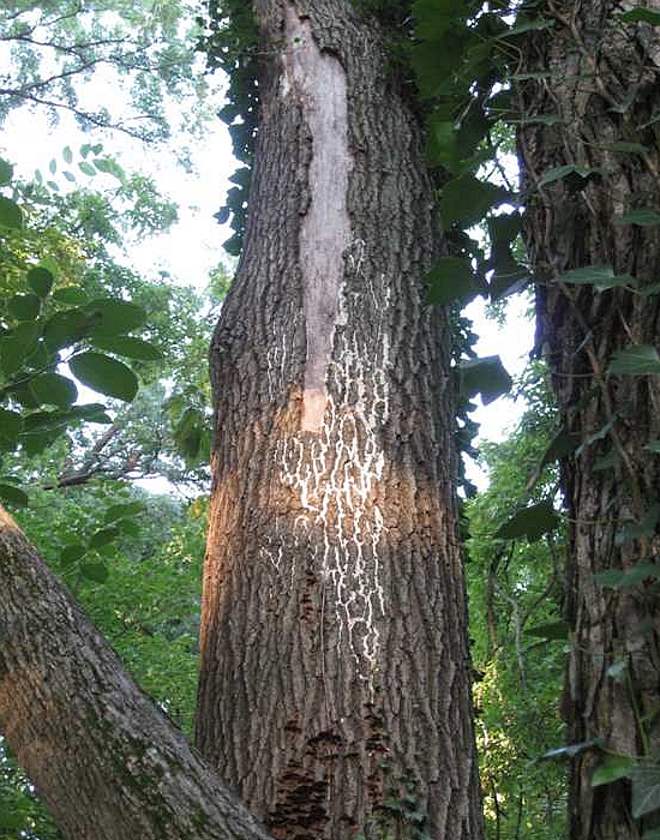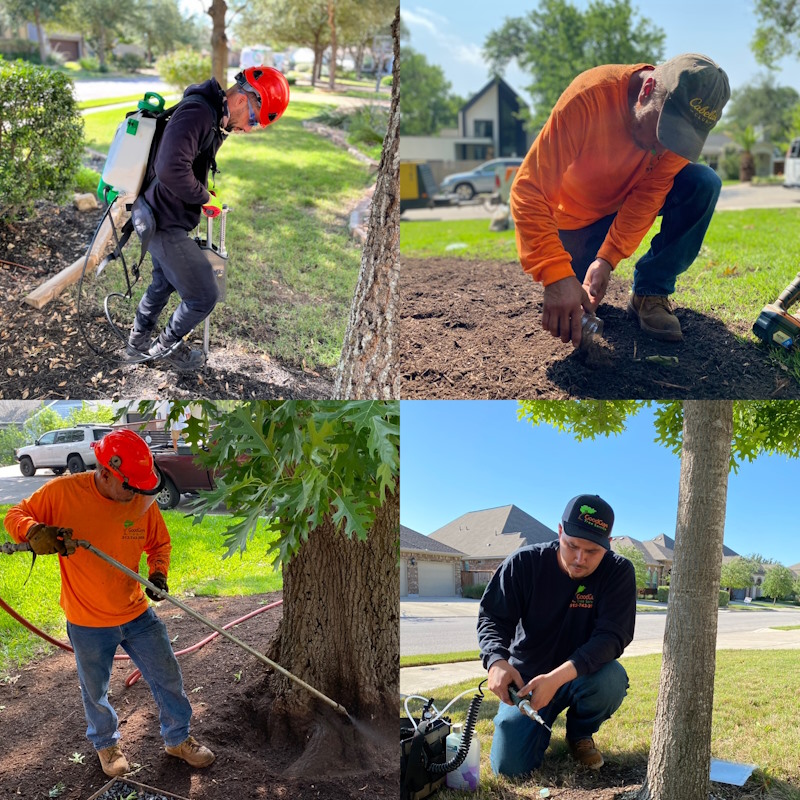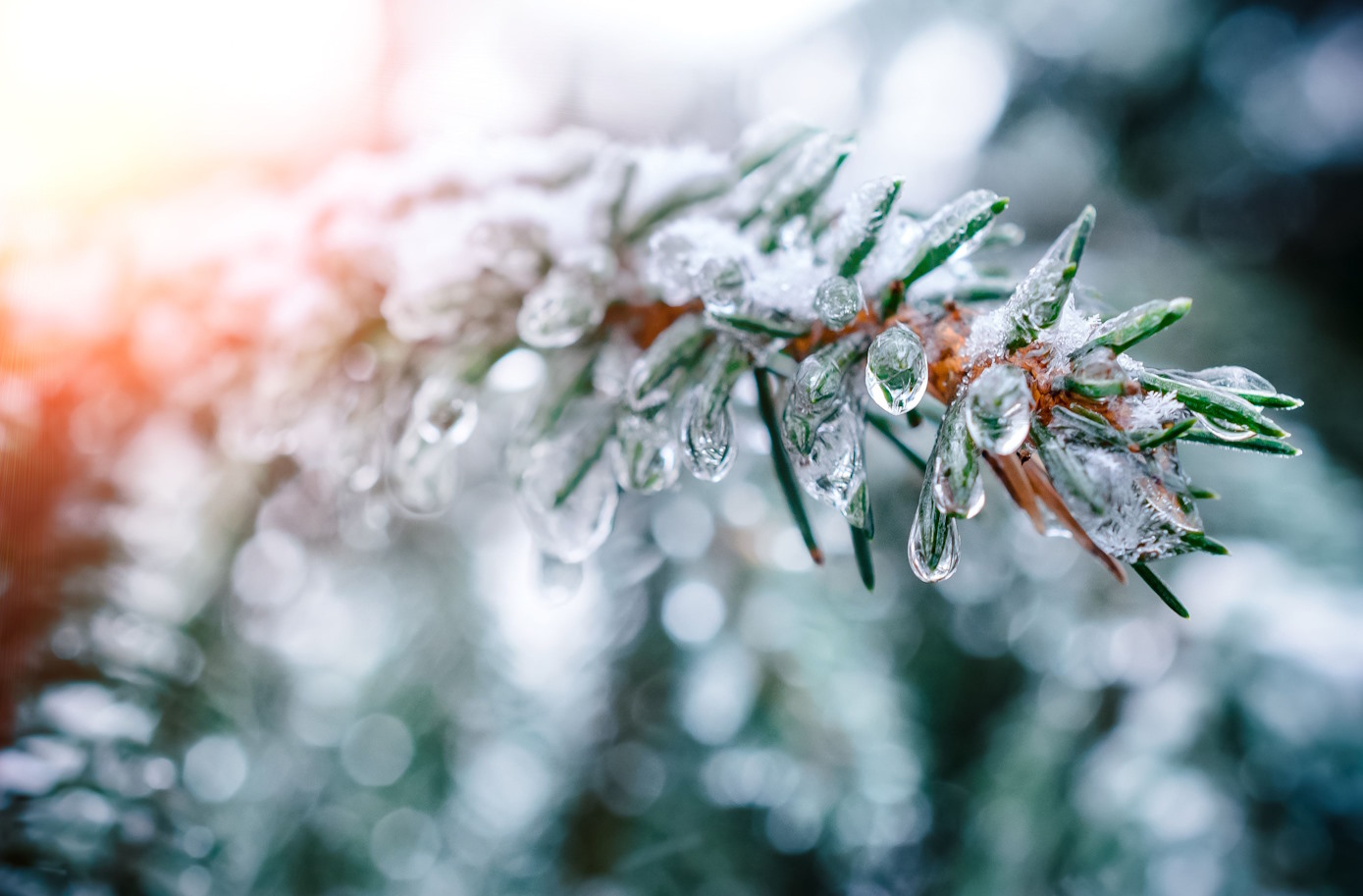1. Chlorosis.
This condition is ubiquitous throughout the greater Austin area. The main cause is the abundance of limestone found in the soils around here. Limestone has a highly alkaline affect on the ground soils, and this makes it hard for certain species of trees to absorb Iron, Magnesium and Zinc. Affected trees are easy to identify for the experienced arborist. The telltale signs are a yellowing or bleached look on what should otherwise be a rich green leaf. If seen in only the beginning stages, the leaves may look veiny or blotched. Fortunately, the treatments for this condition are quite effective. If treated in time, most trees can completely recover and thrive with the proper care.
2. Oak Wilt
The most dreaded two words in Austin’s arboriculture community today is Oak Wilt. The beginning signs are canopy loss at the tree’s extremities. It may be sudden loss or gradual over several seasons. Many folks first notice there is less dense shade under their oak tree then there previously had been as the tree loses more and more of its upper canopy. Without almost immediate treatment, most oaks afflicted with this disease are doomed. The most effective control of Oak Wilt is preventative measures, of course. If you have any trees in your neighborhood that are symptomatic of the disease, consult an arborist about what you can do to protect your Oaks before it spreads.
3. Aphids
These little pests are hitting Austin hard lately. Crepe Myrtle, Burr Oaks ad Fruit trees are the typical targets. Though these are easy enough to identify and treat, they are almost impossible to permanently eradicate. Tree injections are the longest lasting method of treatment, giving some types of trees up to a full year of protection. For smaller trees and shrubs, foliar sprays or basial drench treatments are still quite effective if treatments are employed at the proper seasonal times.
4. Bacterial Leaf Scorch
Red Tips, Fruit trees, Red Oaks and Red Buds seem to be most often affected, but it can be seen in many other species as well. The symptoms are similar to several other diseases but look just like it sounds. Affected tree leaves appear scorched on the ends, and if advanced, scorched entirely. Treatments are effective at protecting new growth, but little can be done for already scorched leaves. As with anything, the sooner it’s treated the better.
5. Mistletoe
This is a goofy plant that grows on plants. Though often not thought of as a disease, it is in fact a parasite that will kill highly infested trees. Read more here: https://www.goodguystreeservice.com/the-twisted-tale-of-the-mistletoe/
6. Ball Moss
This is another goofy plant that grows on plants. Ball moss is less sinister then Mistletoe though and is not been linked as a direct cause of tree decline. It does add extra weight to tree canopies however and can be especially heavy when wet. Since most high winds are accompanied by rain, large amounts of ball moss can contribute to a catastrophic break on major tree limbs. Although removing any one ball moss tuft is easy, when the task is multiplied by the hundreds it can be extremely time-consuming work. Consult an arborist on what the minimum threshold may be on a given tree for ball moss population before needing a removal service. If there are only a few on an otherwise healthy tree, you may not need to spend the extra money going after them just yet.
7. Soil Compaction
This is certainly the hardest one to diagnose but is so commonly the cause of tree decline it had to make this list. The history of the last decade or so of the tree is usually where an arborist will first inquire if faced with a tree that shows signs of distress, but no signs of disease or nutrient deficiencies. Has there been any construction equipment used near or around the tree? Any gradient changes or new landscaping installations in the immediate area? Is the tree in a low-lying area where flooding may be building sediments up over time, or standing water may be driving all the oxygen out of the ground?
The answers to these questions would clue most tree care experts in on soil compaction being the culprit in such cases. Luckily there are several methods to remedy this problem. Airspading, Deep Root injections, Vertical Mulching and Soil Amendments are often deployed to alleviate compaction. The necessity of these treatments wholly dependent on the circumstances and conditions of each tree. If you suspect your tree has been exposed to soil compaction in the past, it is always a good idea to at least have your arborist check for any sign of stress or decline. It can take years for the symptoms to manifest and even more time for a full recovery after treatment.







